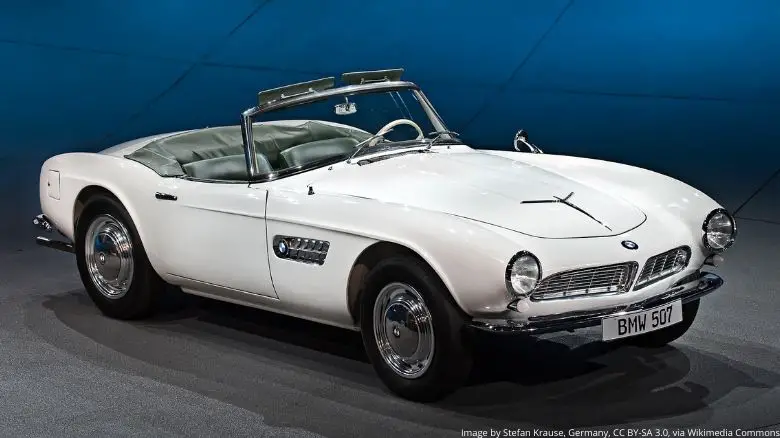Who Owns BMW?

Adam Chinn
Founder, The Car Investor
BMW is one of the most popular car brands in the world. Founded in 1916, it’s now part of a global manufacturing giant headquartered in Munich.
Yet despite being an international company with more than 100 years’ experience, many people aren’t aware of the ownership structure of the company.
So, who owns BMW?
BMW is owned by parent company BMW Group, which in turn is owned by Stefan Quandt and Susanne Klatten, with the remaining shares owned by the public.
The BMW Group comprises of seven brands, including Rolls-Royce and MINI, with more than 120,000 employees worldwide.
But how long have the Quandt family been involved, and what have they done for the brand?
Is BMW still family owned?
BMW is partially family owned, with billionaires Stefan Quandt and his sister Susanne Klatten jointly owning half the shares in the company.
Despite around 50% of shares being publicly traded on the stock market, BMW (or Bayerische Motoren Werke AG) has been at least partially owned by the Quandt family since Herbert Quandt saved the company from bankruptcy in the late 1950s.
When Herbert Quandt died in 1982, the children from his third marriage, Stefan and Susanne, received 23.7% and 19.2% of the BMW shares respectively.

Stefan Quandt and Susanne Klatten
They have been increasing their stake in the company ever since, although only a small proportion of their shares are personally owned. The rest are owned through various business entities.
The full shareholder overview can be found here.
Who is the largest shareholder of BMW?
Advertisement
Stefan Quandt is the largest shareholder of BMW with over 25% of the shares under his ownership. Susanne Klatten is the second largest shareholder.
Although the distribution of BMW shares has varied over the years, Stefan Quandt has always retained the largest proportion throughout.
Susanne Klatten still holds a significant amount, with just over 20% of shares under her control.
The fact that BMW is listed on the stock market means that over half of its shares are held by thousands of different shareholders.
How rich is the BMW family?
The Quandt family is one of the richest in the world, with a combined fortune of over $50bn. Stefan Quandt has a net worth of over $23bn, and his sister Susanne Klatten has a net worth of over $27bn.
The family’s fortune is largely thanks to their father’s foresight, after he invested his money in BMW during Germany’s economic resurrection after the Second World War.
By increasing his stake to a controlling majority in 1959, not only did Herbert Quandt rescue BMW from financial ruin, he also laid the foundations for decades of prosperity which his children have built upon.
However, the fortune amassed by Herbert’s father, Günther, is extremely controversial thanks to his links with the Nazi party during the Second World War. And ultimately it was the money that Herbert inherited from his father that helped pay for his stake in BMW.
Little was known about the Quandt’s links to the Nazi party until a 2007 documentary shown on German television highlighted previous generations of the family’s exploitation of slave labor during the war.
When the documentary was released, remaining members of the Quandt family commissioned a research project to investigate the ties with the Nazis.
The report established that both Günther and Herbert willingly collaborated with the Nazi regime.
Who has owned BMW in the past?
Advertisement
BMW has changed hands a number of times throughout its history. From the early days it was traded as a public limited company, but after the state took ownership during WWII, the company was banned from building motor vehicles in the years proceeding, and flirted with bankruptcy as a result.
Daimler-Benz made its intentions to buy the company known in the late 1950s, but shareholders refused and Herbert Quandt saved the company from a takeover, with BMW remaining independent.

Despite its beauty, the BMW 507 of the 1950s was a commercial failure
Although some people believe that BMW has been owned by other automotive firms in the past, neither Mercedes-Benz, Volkswagen, Audi, or any other German manufacturer has ever owned BMW.
What have the Quandt family done for BMW?
BMW’s fortunes started to turn in the 1960s with its new direction set out by the Quandts. 1961 saw the introduction of the 1500, a sporty sedan, and orders soon started pouring in. BMW was back doing what it did best; building luxury family cars.
With finances looking healthier, expansion was the name of the game. A new factory in Dingolfing, Germany, followed, along with a new production location in South Africa in 1972.
Not long after, BMW’s Motorsport Division (BMW ‘M’ as we know it today) was founded, to much success. It remains a subsidiary of BMW Group to this day and has been instrumental in producing some of the most successful vehicles for the firm.
Throughout the 1980s, BMW continued to grow and prosper internationally thanks to the investment and direction of the Quandts, despite Herbert’s death in a car accident in 1982. His wife Johanna would take over his responsibilities until passing them on to Stefan and Susanne in 1997.
By now the company’s modern naming conventions had been well established; the 3 Series, 5 Series, 6 Series, and 7 Series were all seeing great success across the world, and many of the technological advancements seen in the new 8 Series would shape the future of the firm’s cars.
As a new millennium dawned, so did a new era for the BMW Group. Timely purchases of the Rolls-Royce and Mini brands set the company in good stead to take advantage of growing markets.
With Stefan and Susanne at the helm, BMW continues to go from strength to strength, and will no doubt continue its successful domination of the luxury car market for a long time to come.
The Quandt family turned a small manufacturer of motorcycles, automobiles and aircraft engines into a multi-national automotive group with over 120,000 employees.

About the Author
Adam Chinn is the founder of The Car Investor, combining his passion for classic cars with data-driven investment strategies to help collectors maximize their returns.
View all articles →Related Articles

How to Learn to Work on Cars: 8 Simple Steps
Plenty of people dream of being able to fix their own car. There’s something about the inner-workings of a vehicle that just fascinates people. Learning to work on your own car can be a great way to save money, and it can also be a fun hobby.

Is Driving Fast Bad For Your Car?
Driving fast is bad for the engine, drivetrain, suspension and various other components of a car as it causes them to wear more quickly. However, modern cars are built to tolerate speeds much higher than are legal on any public road.

Are Jaguars Good Cars? (And Are They Worth The Money?)
Jaguars are some of the most exceptional high-quality cars around. Their reputation for reliability is improving, their looks are magnificent, and their performance is sublime. Jaguar has a long history of producing great cars, and is continuing to innovate as we move into the electric vehicle era.
Advertisement